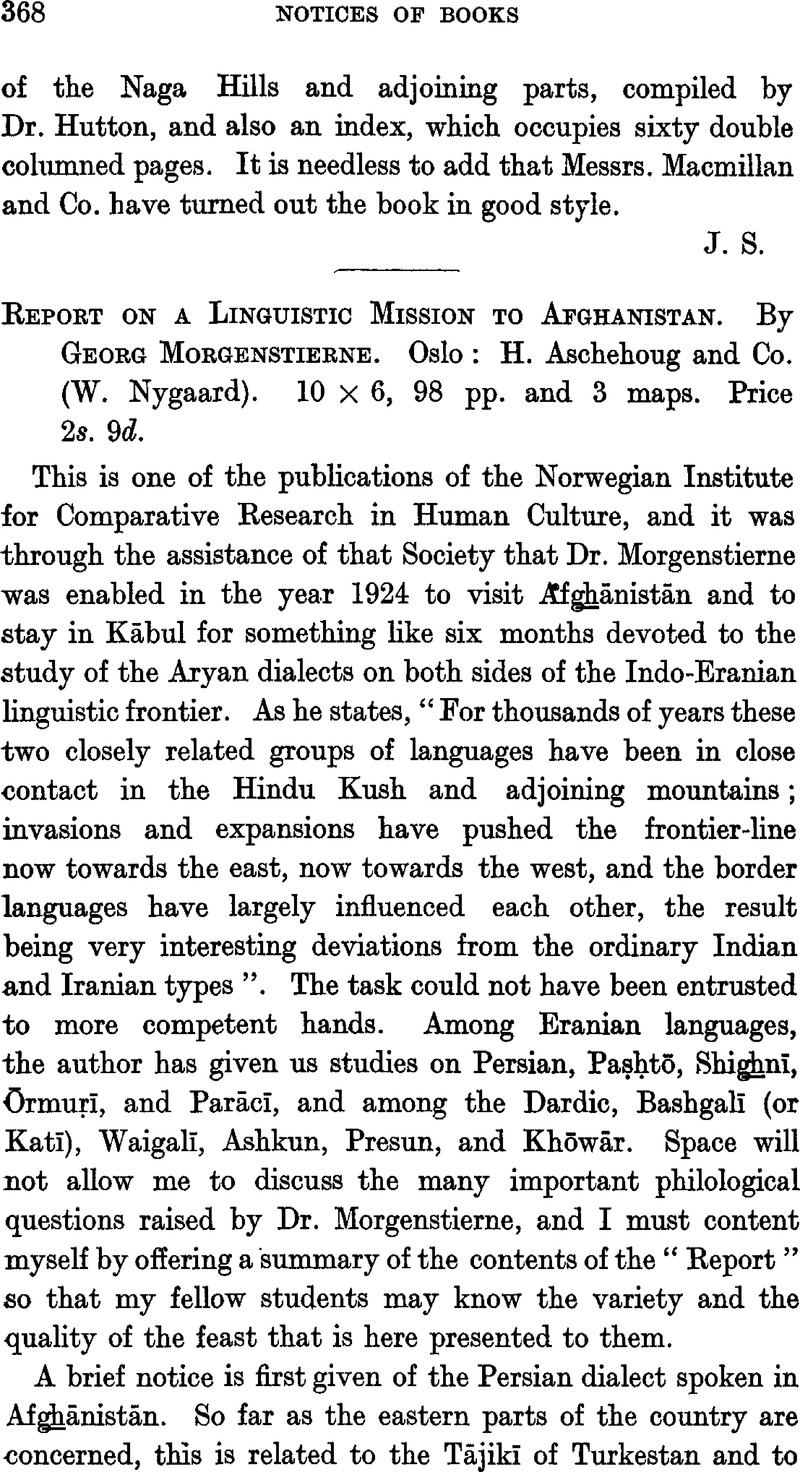No CrossRef data available.
Published online by Cambridge University Press: 15 March 2011

page 369 note 1 I note, en passant, that in some respects Parāchī agrees with Pashai not only in vocabulary but also in morphology, and that this would seem to indicate a relationship between the two that is closer than that shown by mere borrowing.
page 370 note 1 Dr. Morgenstierne adopts slightly different spellings for this and other names. For the sake of convenience I adhere to the spelling of the L.S.I.
page 373 note 1 Dr. Morgenstierne is puzzled by the Khōwār change of d to j in such words as jū, two: još, ten; žūr, a daughter. He compares the Badakhshī jūšīdan < dōšīdan, to milk. I would suggest that here we have a result of the Dardic tendency to insert an i before u or o, exactly as we do in English, in words like “accuse” (pronounced akhyūz). See my Piśāca Languages, p. 86. I may add that jū also occurs in old Kāshmīrī, the modern form being zah. Cf. e.g. Śitikaṇṭha's, Mahānayaprakāsa, ii, 6Google Scholar, bindū jū bhinnē, two drops separately.
page 373 note 2 JRAS., 1925, 405 ff.
page 374 note 1 See for instance DrBailey, Grahame in JRAS., 1925, pp. 92–3Google Scholar.